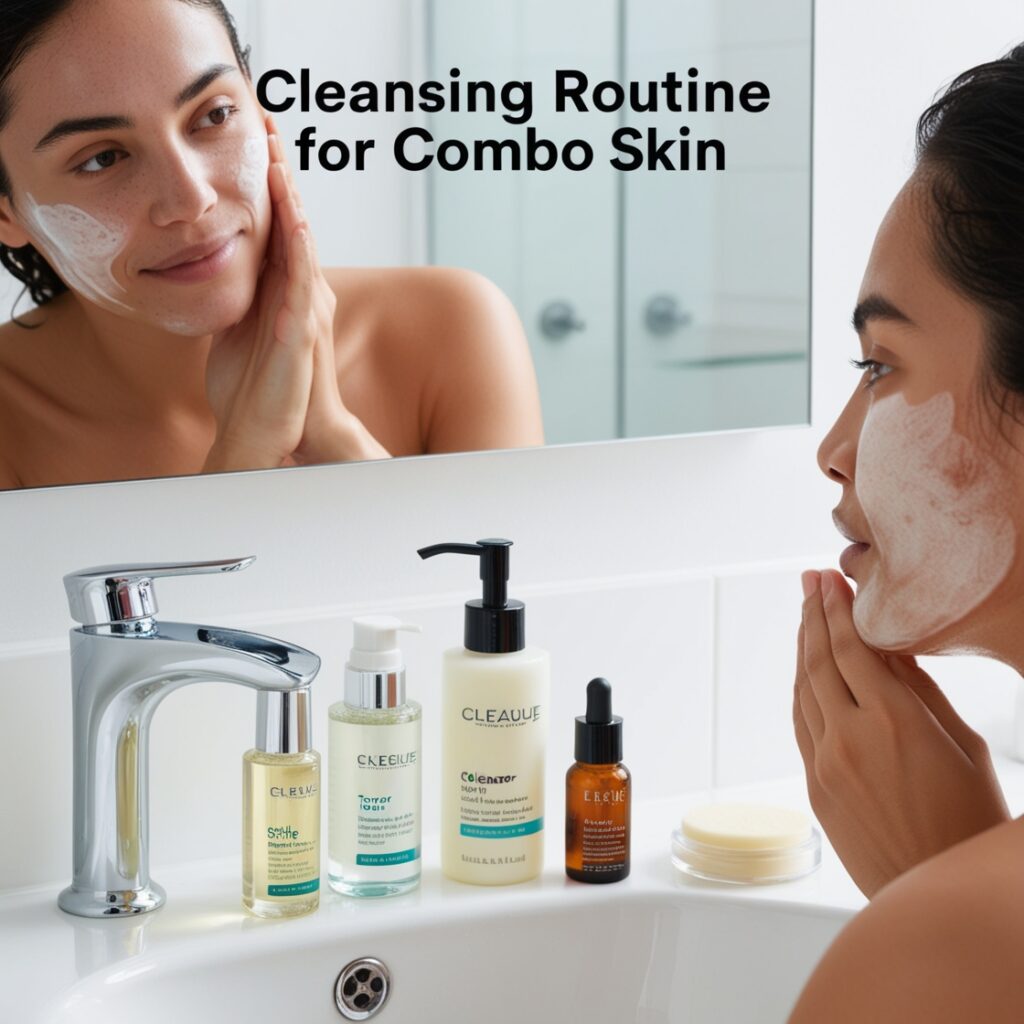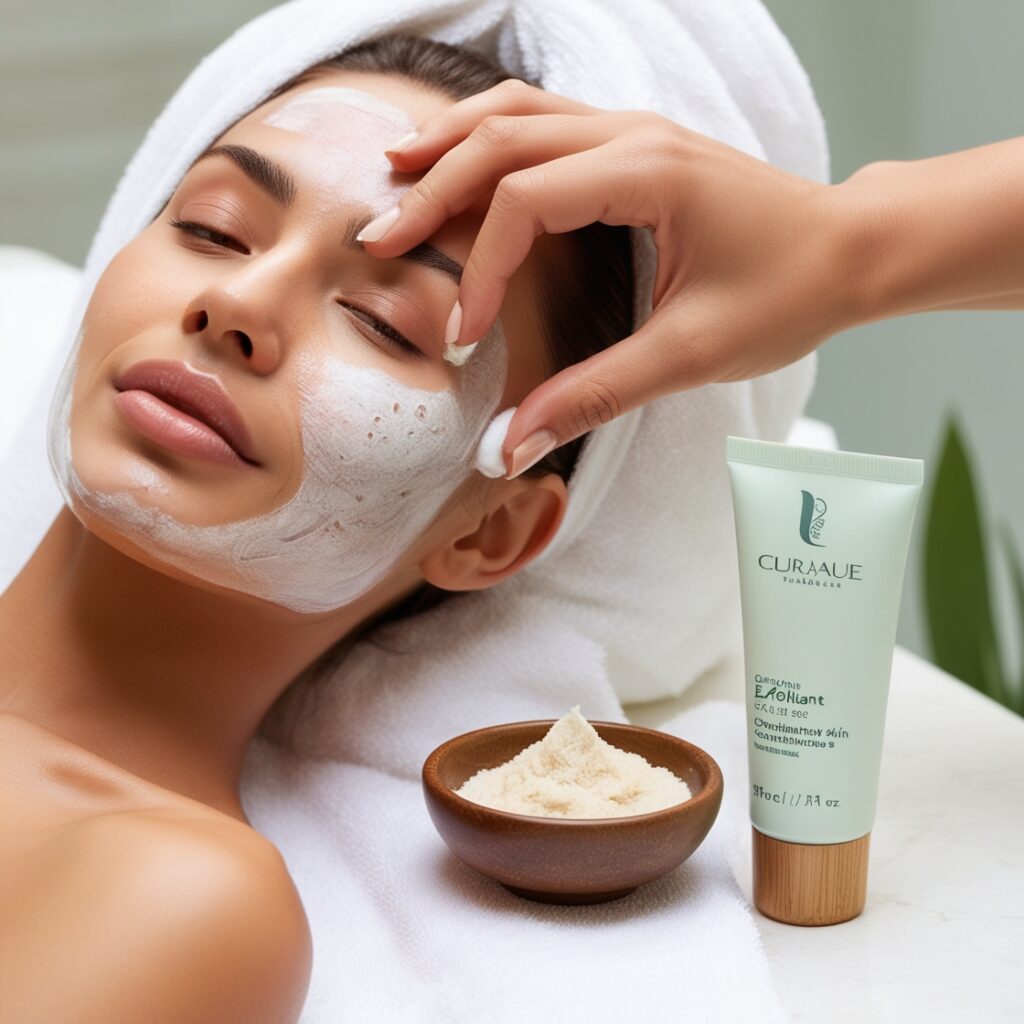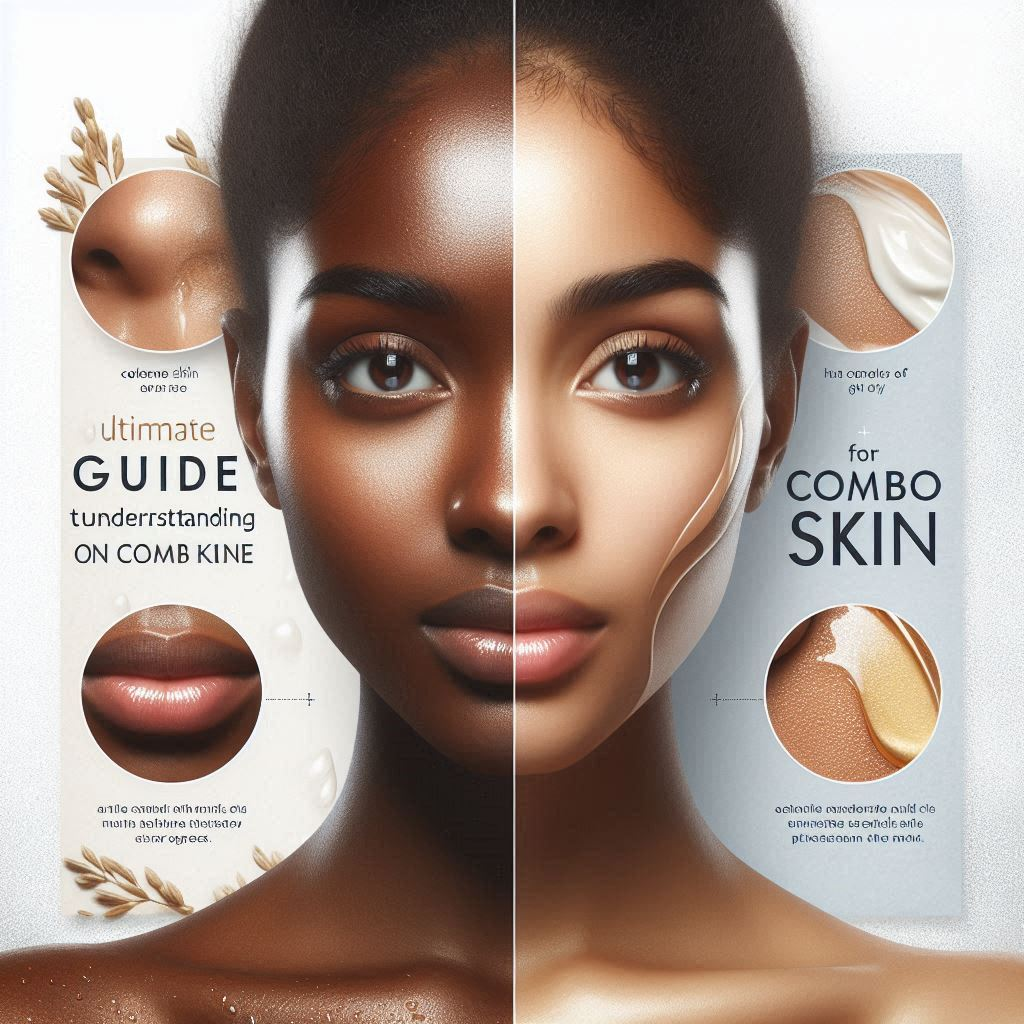Introduction
Navigating the world of skincare can be overwhelming, especially when dealing with combination skin. Whether you’re new to the concept or looking to refine your routine, understanding combo skin is crucial for achieving a balanced, healthy complexion. In this comprehensive guide, we’ll delve into what combo skin is, its characteristics, and causes, and how to tailor your skincare routine to meet its unique needs.
What is Combo Skin?
Combination skin, often referred to as “combo skin,” is a skin type that exhibits characteristics of more than one skin type on different areas of the face. Typically, individuals with combo skin experience oiliness in the T-zone (forehead, nose, and chin) while the cheeks and other areas may be normal to dry. This duality can make it challenging to find the right skincare products and routine.
Characteristics of Combo Skin
- Oily T-Zone: The T-zone, which includes the forehead, nose, and chin, tends to be oily. This can lead to shine, enlarged pores, and an increased likelihood of acne or blackheads in these areas.
- Dry to Normal Cheeks: The cheeks and sometimes the area around the eyes may be dry or normal. This can result in flakiness, redness, or tightness.
- Varied Sensitivity: Combo skin can sometimes show signs of sensitivity, especially if the wrong products are used or if the skin is not properly balanced.

Causes of Combination Skin
Several factors can influence combination skin:
- Genetics: Your skin type is mostly determined by your genetic composition. You may have a combination skin if your parents did.
- Hormonal Changes: Fluctuations in hormones, such as those during puberty, pregnancy, or menopause, can impact oil production and skin moisture levels.
- Environmental Factors: Changes in weather, humidity, and exposure to pollutants can affect skin balance. For instance, cold weather might exacerbate dryness in some areas, while hot and humid conditions can increase oiliness in the T-zone.
- Skincare Products: Using inappropriate skincare products can disrupt the skin’s natural balance. Overly harsh products can strip the skin of essential oils, while overly rich products can exacerbate oiliness.
- Diet and Lifestyle: Diet and lifestyle choices, such as a high intake of greasy foods or insufficient water consumption, can impact skin health and contribute to combination skin.
How to Identify Combo Skin
Identifying combo skin involves paying attention to your skin’s behavior in different areas. To assess your skin type:
- Cleanse Your Face: Start with a gentle cleanser to remove all makeup, dirt, and excess oil. Products with strong chemicals or alcohol should not be used.
- Wait and Observe: After cleansing, avoid applying any additional products. Wait for about an hour and observe how your skin feels.
- Check Different Areas: Feel and examine different areas of your face:
- T-Zone: Is it shiny, oily, or prone to breakouts?
- Cheeks and Perimeter: Do these areas feel dry, tight, or flaky?
- Evaluate: If you notice that the T-zone is oily while the cheeks and other areas are dry or normal, you likely have combination skin.

Skincare Routine for Combo Skin
Creating an effective skincare routine for combo skin involves balancing the needs of both the oily and dry areas. Here’s a step-by-step guide:
- Cleansing: Use a gentle, non-stripping cleanser that can effectively cleanse the oily T-zone without over-drying the dry areas. Gel-based or foaming cleansers are often a good choice.
- Toning: Apply a toner that balances the skin’s pH levels. Look for toners with hydrating ingredients like hyaluronic acid or soothing agents like chamomile.
- Exfoliating: Exfoliate 1-2 times a week to remove dead skin cells and prevent clogged pores. Make use of a gentle exfoliation using lactic or salicylic acid. Avoid over-exfoliating, as this can worsen dryness or sensitivity.
- Moisturizing: Opt for a lightweight, non-comedogenic moisturizer that hydrates without clogging pores. Gel-based or oil-free moisturizers work well for combo skin. Apply more product to the drier areas and less to the oily T-zone.
- Sun Protection: Daily sun protection is crucial. Choose a broad-spectrum SPF that is lightweight and oil-free. Look for sunscreens with added hydration if your skin tends to be dry in some areas.
- Targeted Treatments: Incorporate treatments tailored to specific concerns. For example, use a mattifying primer or treatment in the T-zone if oiliness is a major issue. For dryness or sensitivity, opt for soothing serums or masks.
Best Ingredients for Combo Skin
- Hyaluronic Acid: This ingredient helps to hydrate the skin without making it greasy. It’s ideal for balancing moisture levels across different areas.
- Salicylic Acid: Effective for controlling oil and preventing acne in the T-zone, salicylic acid helps to exfoliate and unclog pores.
- Niacinamide: Known for its anti-inflammatory properties, niacinamide helps to balance oil production and improve skin texture, making it beneficial for combination skin.
- Glycolic Acid: A mild exfoliant that can help to even out skin tone and texture, glycolic acid is useful for removing dead skin cells and brightening the complexion.
- Ceramides: These help to restore the skin barrier and retain moisture, making them beneficial for the dry areas of combination skin.
Common Mistakes to Avoid
- Over-Cleansing: Cleansing too frequently or using harsh cleansers can strip the skin of its natural oils, exacerbating dryness or triggering increased oil production.
- Neglecting the Dry Areas: Focusing only on the oily T-zone and neglecting the drier parts of the face can lead to an imbalance. Ensure that all areas are properly moisturized and cared for.
- Using One Product for All: Applying the same product across your entire face may not address the specific needs of different areas. Tailor your products to target the unique concerns of each zone.
- Skipping Sunscreen: Regardless of skin type, sunscreen is essential for protecting against UV damage. Ensure you use it daily, even if you have oily skin.

Lifestyle Tips for Maintaining Healthy Combo Skin
- Stay Hydrated: Drinking plenty of water helps to maintain overall skin health and balance moisture levels.
- Healthy Diet: Incorporate a balanced diet rich in fruits, vegetables, and healthy fats to support skin health and combat inflammation.
- Regular Exercise: Exercise promotes healthy circulation and helps to regulate oil production. Just be sure to cleanse your skin thoroughly after sweating.
- Manage Stress: High stress levels can impact skin health. Engage in activities that help you relax and manage stress effectively.
Conclusion
Understanding and managing combination skin requires a thoughtful approach to skincare. By recognizing the unique needs of both oily and dry areas, you can create a balanced routine that enhances your skin’s health and appearance. With the right products, ingredients, and habits, you can achieve a harmonious complexion and enjoy the confidence that comes with healthy, radiant skin.

FAQs
Q: How often should I exfoliate combination skin?
A: For combination skin, exfoliating 1-2 times a week is typically sufficient. Over-exfoliating can lead to irritation and imbalance, so choose a mild exfoliant and adjust frequency based on your skin’s response.
Q: Can I use the same sunscreen for combination skin as for other skin types?
A: Yes, but choose a sunscreen that is oil-free or gel-based to avoid adding extra shine to the T-zone. Broad-spectrum protection with SPF 30 or higher is essential for all skin types.
Q: Are there any specific ingredients I should avoid if I have combination skin?
A: Avoid overly harsh ingredients like high concentrations of alcohol or sulfates, which can exacerbate dryness. Also, be cautious with heavy oils and emollients that may clog pores in the T-zone.
Q: How can I prevent makeup from separating or becoming patchy on combination skin?
A: Start with a primer that helps to balance oil and moisture levels. Use a foundation that is suited for combination skin—preferably a long-wearing, oil-free formula. Set with a translucent powder in the T-zone to control shine.
Q: Is it okay to use anti-aging products on combination skin?
A: Yes, you can use anti-aging products, but opt for formulations that are suitable for combination skin. Look for products with hydrating and gentle ingredients, and avoid heavy formulations that may clog pores.
Q: How do I know if my skin is dehydrated or just naturally oily in the T-zone?
A: Dehydrated skin often feels tight and may have visible flakiness or dullness, even in oily areas. Oily T-zones will appear shiny but may not have the same tight or flaky symptoms. Using a hydrating serum can help determine if dehydration is an issue.
Q: Can hormonal changes affect combination skin?
A: Absolutely. Hormonal fluctuations, such as those during puberty, menstruation, or pregnancy, can affect oil production and skin hydration levels, potentially altering the characteristics of combination skin.
Q: What are some effective home remedies for combination skin?
A: Natural remedies such as honey masks can help with hydration, while green tea can soothe the T-zone. However, be cautious with home remedies as they may not always be suitable for all skin types. Patch test any new treatment first.
Q: Should I adjust my skincare routine seasonally for combination skin?
A: Yes, adjusting your routine according to the seasons can be beneficial. In winter, you may need more hydration for dry areas, while in summer, focus on oil control and lightweight products to prevent excess shine.
Q: How can I effectively manage combination skin while traveling?
A: Keep your skincare routine simple with travel-sized products. Apply a moisturizing moisturizer, a broad-spectrum sunscreen, and a mild cleanser. Adjust your routine based on the climate of your destination to maintain skin balance.
Q: Can stress affect combination skin, and how can I manage it?
A: Yes, stress can impact skin health by increasing oil production and exacerbating dryness. Manage stress through relaxation techniques, adequate sleep, and a balanced diet to help maintain skin balance.
By following these guidelines and understanding the intricacies of combo skin, you can achieve a balanced, healthy complexion and enjoy a tailored skincare routine that meets your unique needs.
